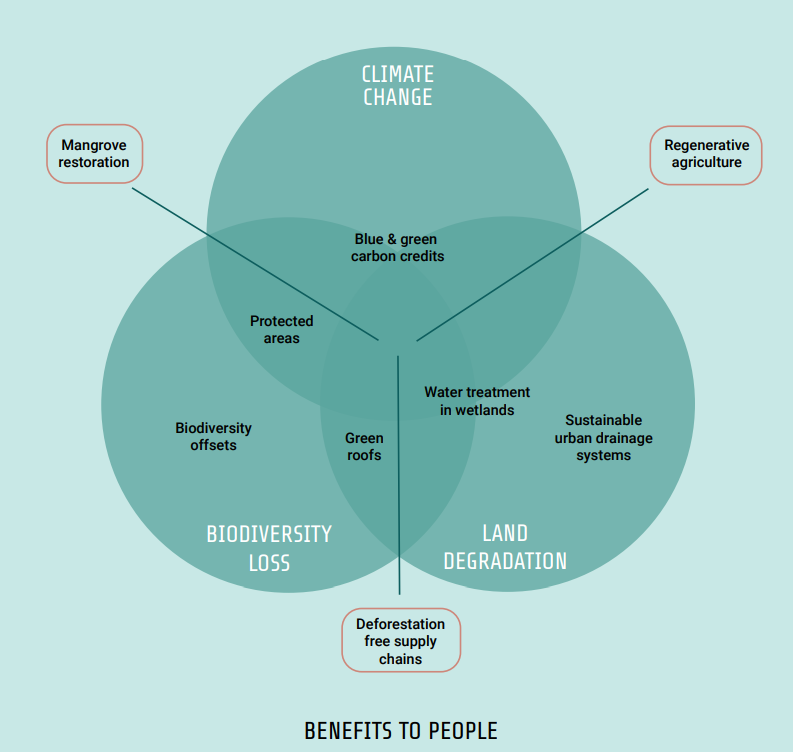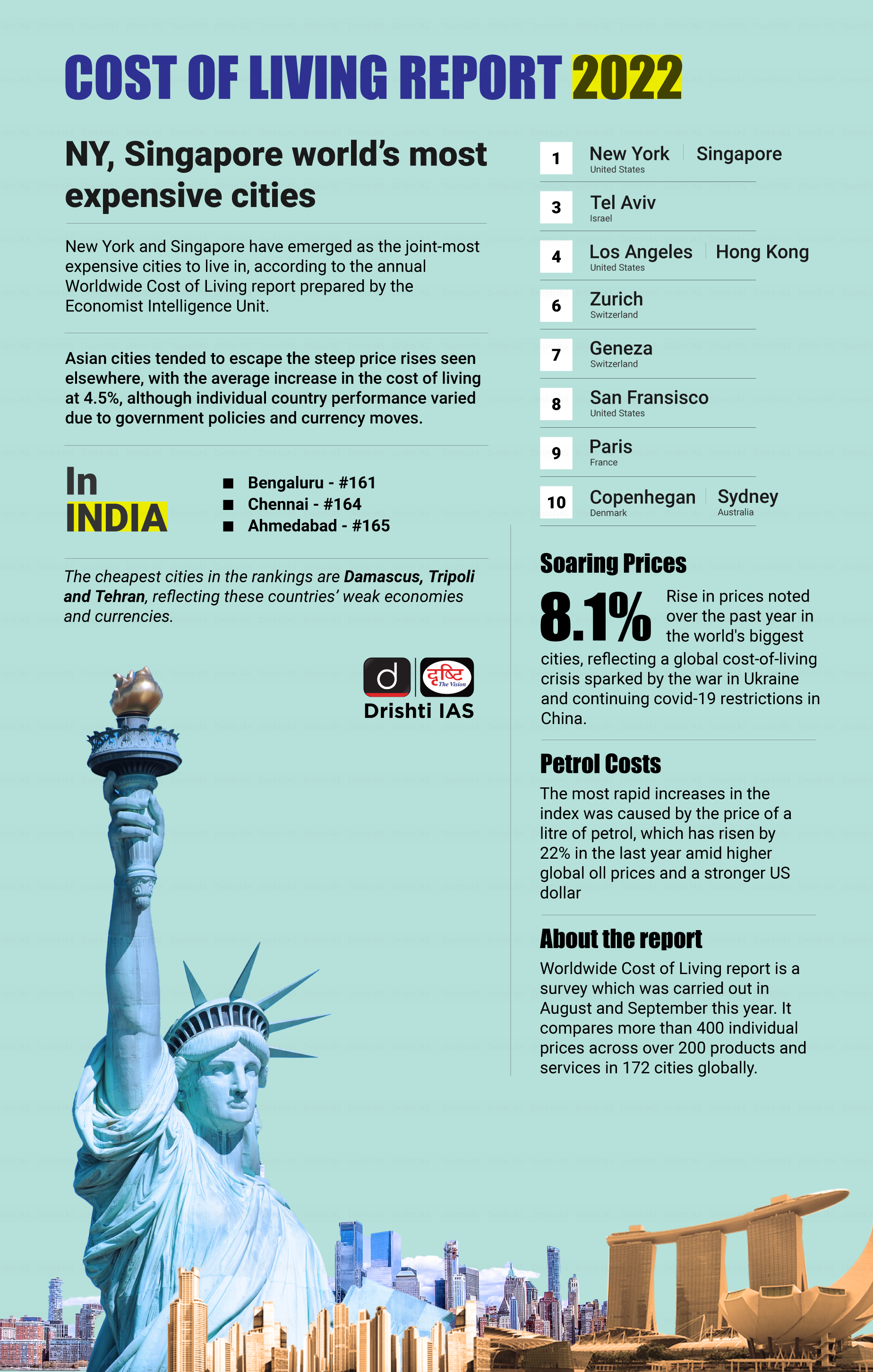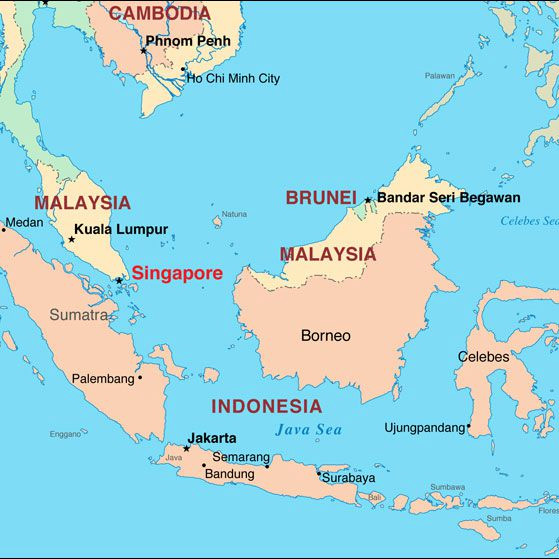Personality Rights
For Prelims: Personality Rights, Article 21, Right to Privacy
For Mains: Government Policies & Interventions
Why in News?
Recently, the Delhi High Court recently passed an interim order to prevent the unlawful use of a Bollywood star’s name, image and voice.
- The court, through its order, restrained persons at large from infringing the personality rights of the actor.
What are Personality Rights?
- Personality rights refer to the right of a person to protect his/her personality under the right to privacy or property.
- These rights are important to celebrities as their names, photographs or even voices can easily be misused in various advertisements by different companies to boost their sales.
- Therefore, it is necessary for renowned personalities/celebrities to register their names to save their personality rights.
- A large list of unique personal attributes contribute to the making of a celebrity. All of these attributes need to be protected, such as name, nickname, stage name, picture, likeness, image and any identifiable personal property, such as a distinctive race car.
What is the Difference between Publicity Rights and Personality Rights?
- Personality rights consist of two types of rights:
- First: The right of publicity, or the right to keep one’s image and likeness from being commercially exploited without permission or contractual compensation, which is similar (but not identical) to the use of a trademark.
- Second: The right to privacy or the right to not have one’s personality represented publicly without permission.
- However, under common law jurisdictions, publicity rights fall into the realm of the ‘tort of passing off’.
- Passing off takes place when someone intentionally or unintentionally passes off their goods or services as those belonging to another party.
- Often, this type of misrepresentation damages the goodwill of a person or business, resulting in financial or reputational damage.
What about the Personality Rights in India?
- The closest statute to protect personality rights is Article 21 of the Constitution of India under rights to privacy and publicity.
- Other statutory provisions protecting personality rights include the Copyright Act, 1957.
- According to the Act, moral rights are only granted to authors and performers, including actors, singers, musicians, and dancers.
- The provisions of the Act mandate that the Authors or the Performers have the right to be given credit or claim authorship of their work and also have a right to restrain others from causing any kind of damage to their work.
- The Indian Trademarks Act, 1999 also protects personal rights under Section 14, which restricts the use of personal names and representations.
- Further, the Delhi High Court in its judgment in Arun Jaitley vs Network Solutions Private Limited and Ors Case (2011) observed that the popularity or fame of an individual will be no different on the internet than in reality.
- The court had also stated that the name also falls in the category wherein besides it being a personal name it has also attained distinctive indicia of its own.
What about Consumer Rights?
- It has been documented that celebrities' names and personalities are protected from commercial misuse, but false advertisements and endorsements by celebrities can also mislead consumers.
- Due to such cases, the Ministry of Consumer Affairs has made a notification in 2022 to keep a check on misleading adverts and endorsements of consumer products by imposing a penalty on the endorser.
UPSC Civil Services Examination Previous Year Question (PYQ)
Q.1 ‘Right to Privacy’ is protected under which Article of the Constitution of India? (2021)
(a) Article 15
(b) Article 19
(c) Article 21
(d) Article 29
Ans: (c)
Q.2 Right to Privacy is protected as an intrinsic part of Right to Life and Personal Liberty. Which of the following in the Constitution of India correctly and appropriately imply the above statement? (2018)
(a) Article 14 and the provisions under the 42nd Amendment to the Constitution.
(b) Article 17 and the Directive Principles of State Policy in Part IV.
(c) Article 21 and the freedoms guaranteed in Part III.
(d) Article 24 and the provisions under the 44th Amendment to the Constitution.
Ans: (c)
Wassenaar Arrangement
For Prelims: Wassenaar Arrangement, NSG, NATO, No Money for Terrorism, Terrorism.
For Mains: Significance of India’s assuming Chairmanship Wassenaar Arrangement.
Why in News?
Recently, on 26th annual plenary of the Wassenaar Arrangement in Vienna, Ireland handed over the chairmanship to India and India will officially assume the chairmanship from 1st January, 2023.
What is Wassenaar Arrangement?
- About:
- The Wassenaar Arrangement is a voluntary export control regime. The Arrangement, formally established in July 1996, has 42 members who exchange information on transfers of conventional weapons and dual-use goods and technologies.
- Dual-use refers to the ability of a good or technology to be used for multiple purposes - usually peaceful and military.
- Wassenaar Arrangement’s Secretariat is in Vienna, Austria.
- The Wassenaar Arrangement is a voluntary export control regime. The Arrangement, formally established in July 1996, has 42 members who exchange information on transfers of conventional weapons and dual-use goods and technologies.
- Members:
- It has 42 member states comprising mostly NATO (North Atlantic Treaty Organization) and EU states.
- Participating States are required to report their arms transfers and transfers/denials of certain dual-use goods and technologies to destinations outside the Arrangement on a six-monthly basis.
- India became a member of the Arrangement in 2017.
- It has 42 member states comprising mostly NATO (North Atlantic Treaty Organization) and EU states.
- Objectives:
- The group works by regularly exchanging information in respect of technology, both conventional and nuclear-capable, that is sold to, or denied to countries outside the grouping.
- This is done through maintenance and updating of detailed lists of chemicals, technologies, processes and products that are considered militarily significant.
- It aims at controlling the movement of technology, material or components to countries or entities which undermine international security and stability.
- Wassenaar Arrangement Plenary: It is the decision-making body of the Arrangement.
- It is composed of representatives of all Participating States and normally meets once a year, usually in December.
- The position of Plenary Chair is subject to annual rotation among Participating States.
- In 2018 the Plenary Chair was held by the United Kingdom, and in 2019 the Chair is held by Greece.
- All Plenary decisions are taken by consensus.
Why is the Chairmanship Significant for India?
- Can Bolster Anti-Terrorism Efforts:
- The timing of India’s WA chairmanship coincides with a recent increase in country’s anti-terrorism position in international bodies.
- India is also actively engaging global stakeholders in curbing terrorist financing.
- Indian home minister is presently the chair of the No Money for Terrorism (NMFT) ministerial initiative.
- Prevent Arms Diversion to Terrorists:
- As a chair of the plenary, India would be in a position to steer discussions of the group to further strengthen the export controls to prevent arms diversion to terrorists or to sovereign nations supporting terrorism.
- Strong Anti-Proliferation Framework:
- The worsening economic crisis in India’s western neighbour coupled with rapid radicalization of historically moderate sects in communities in the country poses a peculiar set of challenges to India.
- Strengthening the licensing and enforcement practices under the WA and adoption of new export controls in areas like flight technology, interception technology and digital investigation tools will pave the way for the creation of a strong anti-proliferation framework for South Asia.
- Democratization of space and Defense Technologies:
- India can play a significant role in democratising access to technologies and processes that can serve as crucial building blocks for the newly emerging defence and space manufacturing sectors in India.
- India is slowly emerging as a low-cost producer of several items in the WA’s control lists.
What are other Export Control Regimes?
- The Nuclear Suppliers Group (NSG), for the control of nuclear related technology.
- The Australia Group (AG) for control of chemical and biological technology that could be weaponized.
- The Missile Technology Control Regime (MTCR) for the control of rockets and other aerial vehicles capable of delivering weapons of mass destruction.
Way Forward
- Membership to these not only allows greater technology and material access but enhances the credibility of a nation as a responsible member of the world order.
- India is poised to become a significant player in the world and thus requires a voice to further its claim as a rising power.
UPSC Civil Services Examination Previous Year Question (PYQ)
Q. Recently, the USA decided to support India’s membership in multi-lateral export control regimes called the “Australia Group” and the “Wassenaar Arrangement”. What is the difference between them? (2011)
- The Australia Group is an informal arrangement which aims to allow exporting countries to minimize the risk of assisting chemical and biological weapons proliferation, whereas the Wassenaar Arrangement is a formal group under the OECD holding identical objectives.
- The Australia Group comprises predominantly of Asian, African and North American countries whereas the member countries of Wassenaar Arrangement are predominantly from the European Union and American Continents.
Which of the statements given above is/are correct?
(a) 1 only
(b) 2 only
(c) Both 1 and 2
(d) Neither 1 nor 2
Ans: (d)
Gaslighting
For Prelims: Gaslighting & It’s Emergence
For Mains: Gaslighting & Its Impact, Common Signs of Gaslighting, Significance of Gaslighting
Why in News?
Recently, Merriam-Webster, America's oldest dictionary publisher, has chosen "Gaslighting" as its Word of the Year.
- Searches on its website for the word have spiked by 1,740% in 2022, according to the company.
What is Gaslighting?
- About:
- Merriam-Webster dictionary defines gaslighting as “psychological manipulation of a person usually over an extended period of time, that causes the victim to question the validity of their own thoughts, perception of reality, or memories and typically leads to confusion, loss of confidence and self-esteem, uncertainty of one’s emotional or mental stability, and a dependency on the perpetrator.”
- Gaslighting involves an imbalance of power between the abuser and the person they’re gaslighting.
- Abusers often exploit stereotypes or vulnerabilities related to gender, sexuality, race, nationality and/or class.
- Emergence of the Word:
- The term “Gaslighting” comes from the title of a 1938 play “Gas Light” by Patrick Hamilton, and the movie based on that play, the plot of which involves a man attempting to make his wife believe that she is going insane.
- Impact on Mental Health:
- Gaslighting is meant to provoke uncertainty and self-doubt, which is often harmful to a victim’s mental health.
- A victim of gaslighting may experience Anxiety, Depression, Disorientation, Lowered self-esteem.
- Gaslighting is meant to provoke uncertainty and self-doubt, which is often harmful to a victim’s mental health.
What are Some Common Signs of Gaslighting?
- The “Twilight Zone” Effect:
- Victims of gaslighting often report feeling like a situation is surreal, it’s happening on a different plane from the rest of their life.
- Being told that the victim is exaggerating.
- Feeling confused and powerless after leaving an interaction.
- Isolation:
- Many gaslighters make efforts to isolate victims from friends, family and other support networks.
- Tone Policing:
- A gaslighter may criticize the tone of voice if the person challenges them on something. This is a tactic used to flip the script and make them feel that they are the one to blame, rather than the abuser.
- A Cycle of Warm-Cold Behavior:
- To throw a victim off balance, a gaslighter may alternate between verbal abuse and praise, often even in the same conversation.
What is the Significance of Gaslighting in Modern Time?
- Gaslighting of Misinformation:
- In this age of misinformation—of “fake news,” conspiracy theories, Twitter trolls, and deepfakes—gaslighting has emerged as a word for Modern Time.
- Gaslighting and Gender:
- Gaslighting in Medicine:
- Some women are gaslighted by their doctors, who may use the stereotype that women are irrational and convince a female patient that nothing is actually wrong with her.
- Public or Collective Gaslighting:
- Many women experience the effects of public gaslighting, also called collective gaslighting, when statements by a public figure or an ordinary person that are widely shared on social media can lead women as a collective to second-guess themselves.
- Gaslighting of Transgender People:
- A gaslighter may try to convince a transgender person that they have a mental health disorder.
- Gaslighting in the Legal System:
- The legal system becomes a critical site of gaslighting when abusers gain control of the narrative and ‘flip’ stories, drawing on stereotypes about women as irrational and aggressive.
- Gaslighting in Medicine:
- Gaslighting and Race:
- The political, social, economic and cultural process that perpetuates and normalizes a white supremacist reality through pathologizing those who resist is the prime example of Gaslighting and Race.
- Gaslighting in the Workplace:
- If a person in a position of power causes one to question themselves in a way that is negatively affecting their career or confidence in their abilities, they may be experiencing gaslighting.
- Gaslighting in Politics:
- In modern times, it’s not uncommon for a politician or political entity to use gaslighting as a tactic to divert public discourse and use manipulation to garner support for or against a certain viewpoint.
Regenerative Agriculture
For Prelims: Regenerative Agriculture, IPCC, Agroecosystem, Soil Degradation.
For Mains: Regenerative Agriculture and its Significance.
Why in News?
The importance of regenerative agriculture was emphasised in the Intergovernmental Panel on Climate Change (IPCC) report on “Climate Change and Land.”
- It is a ‘sustainable land management practice’ that can be effective in building the resilience of agroecosystems.
What is Regenerative Agriculture?
- Regenerative agriculture is a holistic farming system that focuses on soil health, food quality, biodiversity improvement, water quality and air quality through methods such as reducing the use of chemical fertilisers and pesticides, reducing tillage, integrating livestock and using cover crops.
- It adheres to the following principles:
- Minimise soil distribution through conservation tillage
- Diversify crops to replenish nutrients and disrupt pest and disease lifecycles
- Retain soil cover using cover crops
- Integrate livestock, which adds manure to the soil and serves as a source of carbon sinks.
What is the Need of Regenerative Agriculture?
- The current intensive agriculture system has led to soil degradation and constant losses. There may not be enough soil to feed the world in next 50 years, according to international scientists. Soil fertility and biodiversity are decreasing across the globe.
- Regenerative agriculture improves soil health through practices that increase soil organic matter, biota and biodiversity. It also aims at enhancing water-holding capacity and carbon sequestration.
- It facilitates soil aggregation, water infiltration, retention and nutrient cycling.
- Regenerative agriculture also reduces erosion, provides habitat and food for diverse species and is beyond sustainability.
UPSC Civil Services Examination Previous Year Question (PYQ)
Q. How far is Integrated Farming System (IFS) helpful in sustaining agricultural production? (2019)
Q. What is Integrated Farming System? How is it helpful to small and marginal farmers in India? (2022)
Coastal Red Sand Dunes
For Prelims: Erra Matti Dibbalu, Geologic Time Scale, Quaternary Period, Geologic Time Scale.
For Mains: Significance of studying Coastal Red Sand Dunes.
Why in News?
Recently, geologists have suggested to protect the site of Coastal Red Sand Dunes, of Visakhapatnam, Andhra Pradesh.
What are the Key Points of the Sites?
- About:
- The Coastal Red Sand Dunes is also known as ‘Erra Matti Dibbalu’. It is one of the many sites of Visakhapatnam, which have geological importance.
- The site is located along the coast and is about 20 km north-east of Visakhapatnam city and about 4 km south-west of Bheemunipatnam.
- This site was declared as a geo-heritage site by the Geological Survey of India (GSI) in 2014 and the Andhra Pradesh government has listed it under the category of ‘protected sites’ in 2016.
- Distribution:
- Such sand deposits are rare and have been reported only from three places in the tropical regions in south Asia such as Teri Sands in Tamil Nadu, Erra Matti Dibbalu in Visakhapatnam and one more site in Sri Lanka.
- They do not occur in equatorial regions or temperate regions due to many scientific reasons.
What is the Uniqueness of these Sediments?
- Continuous Evolution:
- The red sediments are a part of the continuation of the evolution of the earth and represent the late quaternary geologic age.
- The Quaternary Period is a period on the Geologic Time Scale that's known mainly for the spread of humanity and climate change. This period runs from about 2.6 million years ago to the Present Day.
- The red sediments are a part of the continuation of the evolution of the earth and represent the late quaternary geologic age.
- Different Geomorphic Features:
- With a height of up to 30 m, they exhibit badland topography with different geomorphic landforms and features, including gullies, sand dunes, buried channels, beach ridges, paired terraces, the valley in the valley, wave-cut terrace, knick point and waterfalls.
- Badland topography is a dry terrain where softer sedimentary rocks and clay-rich soils have been extensively eroded by wind and water.
- With a height of up to 30 m, they exhibit badland topography with different geomorphic landforms and features, including gullies, sand dunes, buried channels, beach ridges, paired terraces, the valley in the valley, wave-cut terrace, knick point and waterfalls.
- Geochemically Unaltered:
- The top light-yellow sand unit, which is estimated to have been deposited around 3,000 years ago, could not attain the red colouration as the sediments were geochemically unaltered.
- These sediments are unfossiliferous (not containing fossils) and deposited over the khondalite basement.
- Khondalite is a regional rock with high-grade metamorphism and granulite rock formation. It was named after the Khond tribe of Odisha.
What is the Significance of Protecting this Site?
- It is significant to protect this site, because its study can help understand the impact of climate change, as Erra Matti Dibbalu has seen both the glacial and the warm periods.
- The site is about 18,500 to 20,000 years old and it can be related to the last glacial period.
- It is a lively scientific evolution site, which depicts the real-time effects of climate change.
- About 18,500 years ago, the sea (Bay of Bengal) was at least 5 km behind from the present coastline. Since then, it has been undergoing continuous active changes till about 3,000 years ago and still the changes are on.
- The site also has archaeological significance, as studies of artifacts indicate an Upper Palaeolithic horizon and on cross dating assigned to Late Pleistocene epoch, which is 20,000 BC.
- The site was home to the pre-historic man as the excavations at several places in the region revealed stone implements of three distinctive periods and also the pottery of the Neolithic man.
State of Finance for Nature Report
For prelims: Nature-based Solutions (NbS), State of Finance for Nature Report, UN Environment Programme, NbS, Sustainable Development Goals, Paris Agreement on Climate Change,
For Mains: Nature-based Solutions (NbS), Environmental Pollution & Degradation
Why in News?
Recently, the second edition of the State of Finance for Nature report was released.
- The report was released jointly by the UN Environment Programme (UNEP) along with the Economics of Land Degradation initiative of the Federal Ministry for Economic Cooperation and Development (BMZ) of Germany, the United Nations Convention to Combat Desertification (UNCCD) and the European Commission.
What are the Findings of the Report?
- Current Financial Flows:
- Current public and private financial flows to NbS are estimated to be USD 154 billion per year.
- Public funds make up 83% of the total and the private sector contributes approximately 17%.
- Current public and private financial flows to NbS are estimated to be USD 154 billion per year.
- Changes in NbS Finance Flows:
- Total finance flows to NbS have increased by USD 3.9 billion from USD 150 billion (SFN 2021) to USD 154 billion per year.
- This represents year-on-year growth in investment of 2.6% in real terms across the sum of public and private financial flows.
- Investment in Marine NbS and Protected Areas:
- SFN 2022 broadened the scope by including marine nature-based solutions and detailed assessment of protected area finance.
- Finance flows to marine NbS are roughly USD 14 billion, 9% of total (terrestrial and marine).
- Annual domestic government expenditure in marine NbS is over USD 10 billion per year, including spending on marine protected areas, sustainable management of fisheries and research and development of fisheries.
- Nature-negative Financial Flows:
- Public financial support for nature-negative activities ranges from USD 500 to 1,100 billion per year at present, which is three to seven times larger than current investments in NbS.
What are the Recommendations?
- Investment in Nature Based Solution:
- Without an increase in investments in nature-based solutions to USD 384 billion/year by 2025, the goals of climate change, biodiversity, and land degradation will not be met.
- There is a need to double the funding for NbS and reduce it for activities that increase Greenhouse Gas Emissions (GHG).
- Private Investments:
- Private sector actors will have to combine ‘net zero’ with ‘nature positive’.
- For this, private companies must create a sustainable supply chain, reduce activities that negatively impact climate and biodiversity, offset any unavoidable activities through high-integrity nature markets, pay for ecosystem services and invest in nature-positive activities.
- Increase Inclusion in Financial Systems:
- In order to scale up NbS investments, public and private sectors must incorporate just transition principles that safeguard human rights.
- A Just Transition involves maximizing the social and economic opportunities of climate action, while minimizing and carefully managing any challenges – including through effective social dialogue among all groups impacted, and respect for fundamental labour principles and rights.
- In order to scale up NbS investments, public and private sectors must incorporate just transition principles that safeguard human rights.
What is Nature-based Solution(NbS)?
- The NbS refers to sustainable management and use of nature to tackle socio-environmental challenges, which range from disaster risk reduction, climate change and biodiversity loss to food and water security as well as human health.
- NbS creates harmony between people and nature, enables ecological development and represents a holistic, people-centred response to climate change.
- Thus, NbS underpin the Sustainable Development Goals, as they support vital ecosystem services, biodiversity, and access to fresh water, improved livelihoods, healthy diets and food security (organic agriculture) from sustainable food systems.
- Also, NbS are an essential component of the overall global effort to achieve the goals of the Paris Agreement on Climate Change.
What is the United Nations Environment Programme?
- About: The UNEP is a leading global environmental authority established on 5th June 1972.
- Functions: It sets the global environmental agenda, promotes the sustainable development within the United Nations system, and serves as an authoritative advocate for global environment protection.
- Major Reports: Emission Gap Report, Adaptation Gap Report, Global Environment Outlook, Frontiers, Invest into Healthy Planet.
- Major Campaigns: Beat Pollution, UN75, World Environment Day, Wild for Life.
- Headquarters: Nairobi, Kenya.
UPSC Civil Services Examination Previous Year Question (PYQ)
Q. The ‘Common Carbon Metric’, supported by UNEP, has been developed for
(a) assessing the carbon footprint of building operations around the world
(b) enabling commercial fanning entities around the world to enter carbon emission trading
(c) enabling governments to assess the overall carbon footprint caused by their countries
(d) assessing the overall carbon foot-print caused by the use of fossil fuels by the world in a unit time
Ans: (a)
DigiYatra
Why in News?
Recently, the government has introduced paperless entry at select airports to make air travel hassle-free.
- In the first phase, the initiative will be launched at seven airports, starting with three — Delhi, Bengaluru, and Varanasi, followed by four airports namely Hyderabad, Kolkata, Pune, and Vijayawada by March 2023.
- Subsequently, the technology will be implemented across the country.
What is DigiYatra?
- About:
- DigiYatra envisages that travellers pass through various checkpoints at the airport through paperless and contactless processing, using facial features to establish their identity, which would be linked to the boarding pass.
- With this technology, the entry of passengers would be automatically processed based on the facial recognition system at all checkpoints – including entry into the airport, security check areas, aircraft boarding, etc.
- Implementation:
- The project is being implemented by the DigiYatra Foundation under the Ministry of Civil Aviation.
- DigiYatra Foundation is a joint-venture company whose shareholders are the Airports Authority of India and Bengaluru Airport, Delhi Airport, Hyderabad Airport, Mumbai Airport and Cochin International Airport.
- The project is being implemented by the DigiYatra Foundation under the Ministry of Civil Aviation.
- Significance:
- Facial recognition technology is beneficial as it makes flying more convenient and reduces congestion at airports.
- The facial recognition system at various airports across the globe, including Dubai, Singapore, Atlanta and Narita (Japan), have helped bring in efficiency.
- Result in lower cost operations.
- Digitize current manual processes and to bring better efficiencies.
- Enhance security standards and improve current system performance.
- With Digi Yatra, India is setting a new global benchmark for a seamless, hassle free and health risk free process at airports.
- Facial recognition technology is beneficial as it makes flying more convenient and reduces congestion at airports.
12th Edition of Exercise Agni Warrior
Why in News?
The 12th Edition of Exercise Agni Warrior, a bilateral exercise between the Singapore & Indian Army, culminated at Field Firing Ranges, Maharashtra.
What is Exercise Agni Warrior?
- Exercise Agni Warrior, involved showcasing joint firepower planning, execution and use of New Generation Equipment by the Artillery arm of both armies.
- Exercise also included participation by both sides in a joint computer war-game as part of joint planning process.
- Expert academic discussions were conducted on modern trends in Artillery and refinement of the Artillery planning process.
- The exercise achieved its aim of enhancing mutual understanding of drills & procedures and improving interoperability between the two armies.
What are the Other Exercises between India and Singapore?
- Bold Kurukshetra (Army)
- Joint Military Training (Air Force)
- Trilateral Maritime Exercise SIMTEX (With Thailand).





